How to get a product reviewed
My reviews are for a significant part a performance test of the product, i.e. I uses precision equipment to test how the product performs and add comments to these test. I do also add photos showing the product and a conclusion that is my opinion about the product, after testing it.
There is a couple of ways to get a product reviewed:
- The manufacturer sends one to me.
- A dealer sends one to me.
- A reader ask or pays a dealer to send a item to me.
- Send me a request to review a specific product (Please include a link to a dealer that ships to EU). I consider all request I get.
- I see a product that interest me.
- I prefer to get product directly from companies, but sometimes I do accept product from readers.
Product from manufacturers and dealers usual get reviewed first, this means that the other product can get delayed a long time (many months in some cases).
Before sending a product for review, please contact me on email or via PM to HKJ on CPF or BLF.
It is free to get a product reviewed, but I do usual not return it. I keep them around, this makes it possible to check specific questions about products (Return shipping from Denmark would also be very expensive). Older products might be given away or sold.
From I receive a product it will take some time before I can publish the review, often a month or more. This time is used to take photos of the product, test the product, write the review and fit it into my publishing schedule. Often I have to finish some other product review first. See below for more information.
Below in the product types I have added a estimate of the test time. This is the time used for the actual test, when I have some free equipment to test it on.
When sending many products for review, I will probably not publish all reviews in sequence, but add some other brands in between.
If a product has a serious problem I might notify the dealer/manufacturer before publishing the review and if they have a good explanation I will usual add it to the review. If it is clear that the product is a faulty copy, I might postpone the review, until I have tested another copy of the product (Or drop the test completely).
Shipping
Sending product for review to me can be done a number of ways:
- Postal service. This usual works very well within my country and from the nearby countries, but can take some time from other parts of the world.
- EMS. Inside Denmark it is handled the same was as ordinary post.
- DHL. My favorite courier, they usual notify me before they deliver anything, making it much easier to meet.
- TNT.
- FedEx.
- GLS.
- UPS. Will usual ship LiIon batteries
Generally I queue stuff in the sequence I receive it.
If possible, please include the retail package in the shipping.
It is also a good idea to include a reference to our communicatation, like: As we talked about on email/CPF/BLF date and name.
I review the following products
LiIon Batteries
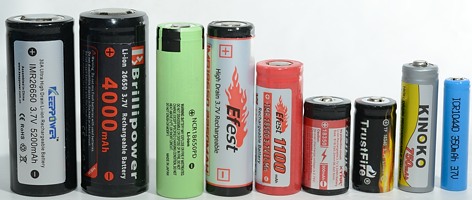
Round lithium ion cells in different sizes. These batteries are charged and discharged at a couple of different currents, depending on battery size the lowest current is 0.1A or 0.2A, the highest current can be up to 30A. Depending on the battery voltage I do one (4.2V), two (4.3V) or three(4.35V) test runs, each run takes about a week. I do often have a long queue of batteries to test, i.e. it can take months from I receive a battery, until I publish a review.
With batteries I always includes a "Official specification" list, this is the specifications as found on the dealers/manufacturers website.
Example: 3400mAh battery
For testing I need two batteries and a link to the specifications. For high current or high voltage batteries (4.30V/4.35V), please include a note with the maximum current/voltage for the cell.
Batteries will usual get the best review when the two batteries are same age and has been through the same events.
NiMH Batteries
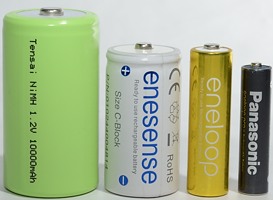
Round NiMH batteries from AAA to D size. These batteries are charged and discharged at a couple of different currents, the lowest current is 0.1A, the highest current can be up to 20A.
The test time will vary with the battery capacity from about one week to over 3 weeks for D cells.
Example: Eneloop 2500mAh
For testing I need two batteries (For AA/AAA I prefer a four pack) and a link to the specifications.
Primary Batteries
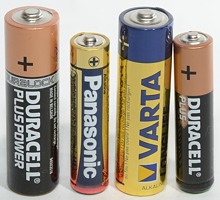
Round batteries from AAA to D size and CR123A size. I discharge a couple of batteries at different currents, the lowest current is 0.1A, the highest current will depend on battery size.
The test time will vary with the battery capacity from about 3 days to about two weeks.
Example: Panasonic Pro Power AA
For testing I need 8 batteries and a link to the specifications.
Other Batteries

Sometimes I do test other battery sizes or chemistries, but I need detailed information about the battery before I can test it, i.e. what currents it can handle and what charge algorithm to use.
The test time will probably be around a week, but I might also need some time to design test scripts.
For testing I need 3 or 4 rechargeable batteries or 10 primary batteries, i.e. I need some extra batteries to do my initial test on.
Battery chargers, both LiIon and NiMH
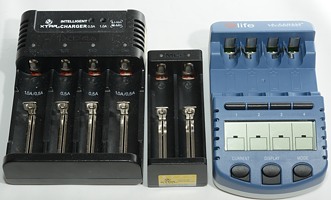
With chargers I charge a couple of different batteries (NiMH & LiIon in different sizes), if the charger has other function these are also tested. If the charger has multiple current settings I will usual test them all.
If the charger can also function as a usb power bank, it will also get the same test as a power bank, but in the evaluation the charger functions are most important.
Example: Soshine max
For testing I need one charger, preferable in retail packing. I do prefer to get an EU power plug and test with 230 VAC mains, but I can also test with 120 VAC.
The test time is from a few days to about 3 weeks, support for multiple cells, multiple currents, multiple chemistries, extra functions will extend the test time.
USB chargers/power supplies

With USB chargers I test them at different loads, looking at the noise and stability. I will check what type of coding they uses on the USB connector. I do usual take photos of the circuit board.
I can test usb, Quick Charge, Simple USB-C (i.e. without chip).
Example: Nillkin 2A
For testing I need one usb charger, preferable in retail packing. I do prefer to get an EU power plug and test with 230 VAC mains, but I can also test with 120 VAC.
These test are fairly simple and can usual be done in a day.
Multimeters
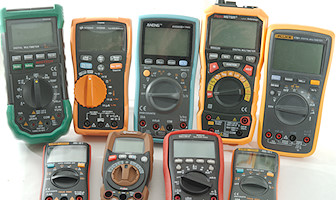
I started doing multimeter reviews late 2017 and will review both low and high end multimeters.
Example: Brymen BM235 see also Multimeter selection table
USB power banks with user replaceable batteries
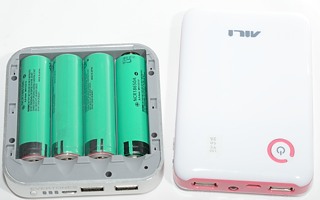
Power banks are a combination of a USB charger and a USB power supply running on batteries. These get a simplified charger test and a USB charger test. Because they run on batteries I test the total runtime, often with a few different batteries. I do usual take photos of the circuit board.
I can test usb, Quick Charge, Simple USB-C (i.e. without chip).
Example: Coolook
For testing I need one power bank, preferable in retail packing and a link to the specifications.
The test time is about one week.
USB power banks with build in batteries.
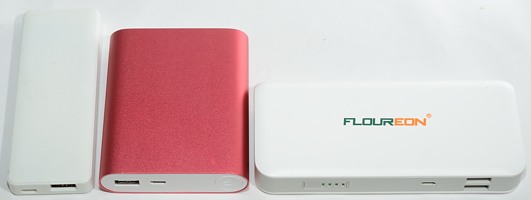
With these power banks my possibility to test can be restricted to only the charge current and the usb output current. If I can open them the test will be more detailed and include photos of the circuit board.
I can test usb, Quick Charge, Simple USB-C (i.e. without chip).
Example: FlourEon HQM403, could not be opened
Example: XY-8030, possible to open
For testing I need one power bank, preferable in retail packing and a link to the specifications.
The test time is usual a few days.
Flashlight led driver circuits
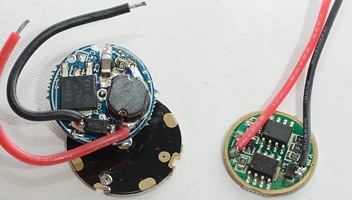
Drivers for led flashligt are tested with the type of led they are rated for and with a input voltage sweep to see how they work at different voltages.
Example: 1-2* Lithium 2-Group 3/5-Mode 2.8A LED Flashlight Driver (LD-29)
For testing I need one led driver and a link to the specifications.
The test time is usual a day.
Other stuff
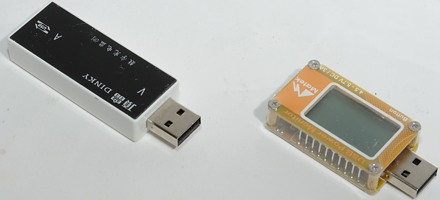
I do sometimes test other electric equipment, usual the items are related in some way to the above or used by the same people.
Some examples: DMM USB meter DC-DC converter
Usual I need one copy of the product to test.
The testing time will vary, depending on the product.
Queues
Sometimes I has a lot of stuff to review, this means I will queue it. Different product goes into different queues, depending on what testing station I has to test it on. This means I have the following queues that are mostly independent:
- Batteries for test station 1:LiIon with 2800mAH or more capacity. All 26500 and 26650 does always go into this queue.
- Batteries for test station 2:LiIon with less than 2800mAH capacity and primary batteries. Primary AA and AAA are fairly fast to test and they might skip the queue.
- Batteries for test station 3: NiMH and NiZn with any capacity.
- Chargers and power banks for test station 3 or main.
- All other stuff for test on main.
As can be seen there is some overlap on test station 3 and on main, this can sometimes give some delays.
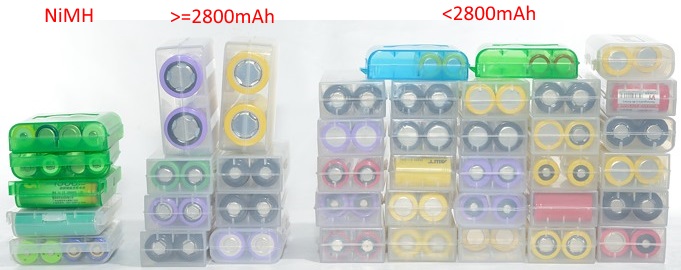
At the start of August 2014 my battery was extremely long for batteries below 2800mAh. All these batteries has been tested/reviewed now.
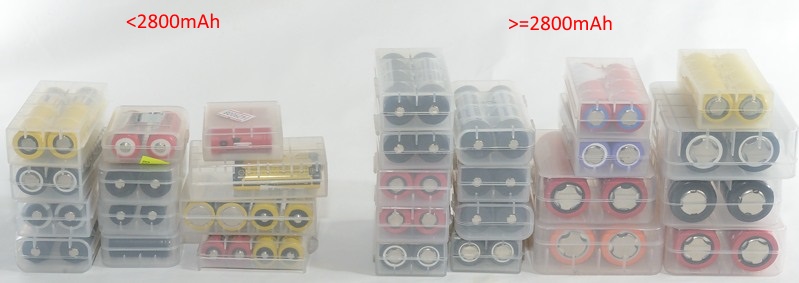
August 2015 also starts with a long queue, most of it arrived in July. It is obvious that the LiIon capacity has increased, the pile for the >=2800mAh is largest. It contains 3500 and 3600mAh cells and 3000mAh high current cells.
Publishing
When finished with testing I do the writing and publish the review. I have for some time been publishing a review each other day when my schedule allows it. I uses this sequence: long review - battery - short review - battery (i.e. a 8 day sequence).
I can usual do one long review each 8 days, this is often chargers, but can also be other stuff.
The short reviews are anything, this also include power banks and batteries.
When running all test stations for full speed I can test more stuff than I have time to publish in the above schedule. This means some reviews can get delayed or I might publish an extra review.
All reviews are published on my website. I do publish most reviews on BLF, batteries and charger are also published on CPF and Fonarevka.
If the dealer that supplied the item for review wants to run a promotion when I publish the review it is possible to get a coupon code and a link on the front page of my website for about 3 weeks (As long as the item is in the "Last additions" list). This is free.
Workflow

Here I have tried to illustrate my workflow. I have only shown a queue before the test stations, but usual there will also be queues between the other steps.













